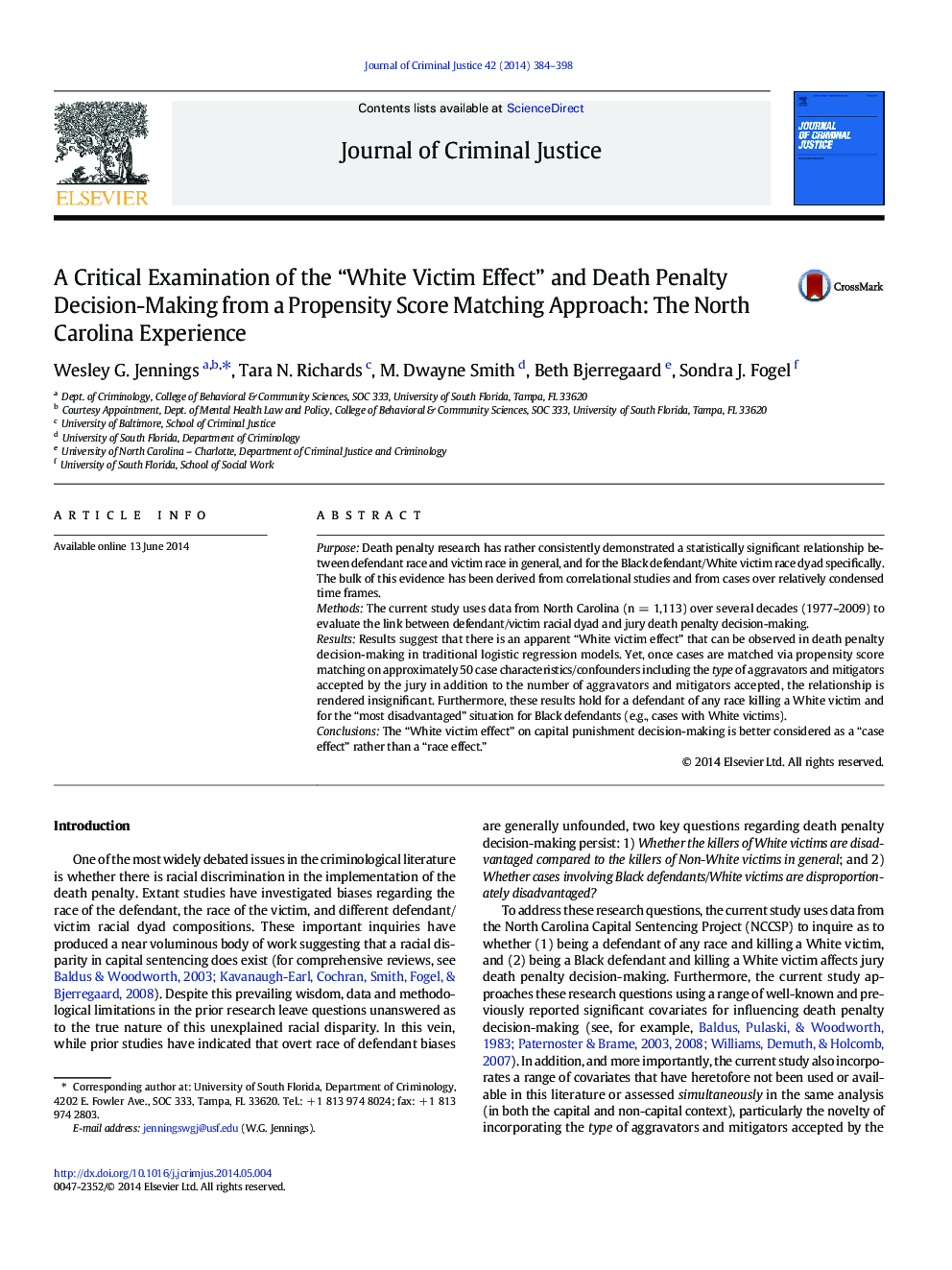| Article ID | Journal | Published Year | Pages | File Type |
|---|---|---|---|---|
| 882664 | Journal of Criminal Justice | 2014 | 15 Pages |
•The “White victim effect” is observable in traditional logistic regression models.•After propensity-score matching, the “White victim effect” is no longer apparent.•Results apply when examining the most disadvantaged situation for Black defendants.
PurposeDeath penalty research has rather consistently demonstrated a statistically significant relationship between defendant race and victim race in general, and for the Black defendant/White victim race dyad specifically. The bulk of this evidence has been derived from correlational studies and from cases over relatively condensed time frames.MethodsThe current study uses data from North Carolina (n = 1,113) over several decades (1977–2009) to evaluate the link between defendant/victim racial dyad and jury death penalty decision-making.ResultsResults suggest that there is an apparent “White victim effect” that can be observed in death penalty decision-making in traditional logistic regression models. Yet, once cases are matched via propensity score matching on approximately 50 case characteristics/confounders including the type of aggravators and mitigators accepted by the jury in addition to the number of aggravators and mitigators accepted, the relationship is rendered insignificant. Furthermore, these results hold for a defendant of any race killing a White victim and for the “most disadvantaged” situation for Black defendants (e.g., cases with White victims).ConclusionsThe “White victim effect” on capital punishment decision-making is better considered as a “case effect” rather than a “race effect.”
